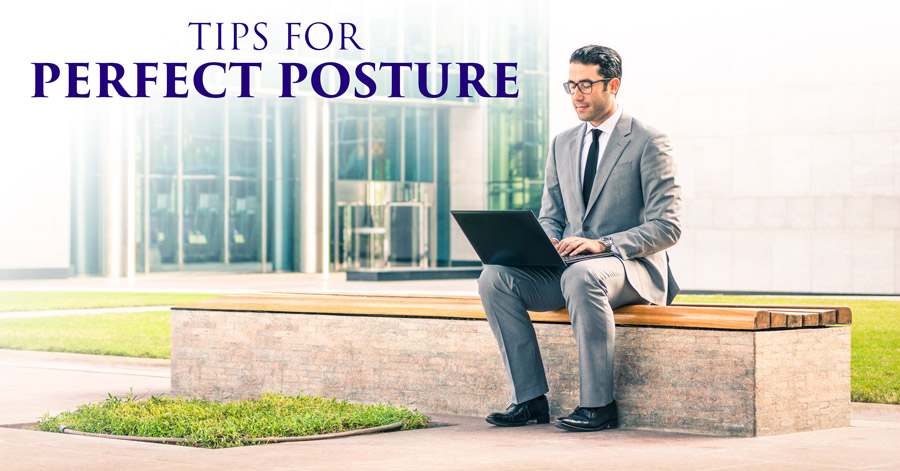
For many, posture is one of those concepts that sometimes crosses our minds, at which point we sit up straight in our chairs, push our shoulders back and vow to sit this way forever (I’m sure you’re doing this while reading this sentence).
Unfortunately, that promise of perfect posture forever rarely pans out.
Maybe if we understood the reasons behind posture’s importance, it would help us keep our promise.
Posture is the position that we hold our bodies in while sitting, standing or lying down. When you have good posture, it means that your body parts are correctly aligned so that they are being supported by the right amount of muscle tension against gravity.
Good posture helps us exist in positions that put the least amount of strain on supporting muscles and ligaments during movement. It helps us keep bones and joints correctly aligned so that muscles are used correctly, which decreases the abnormal wearing of joints that could result in arthritis and joint pain. It also reduces stress on ligaments, reducing likelihood of injury, allows muscles to work more efficiently and prevents muscle strain.
Conversely, poor posture can put excessive strain on postural muscles or could cause them to relax, making them more prone to injury and pain. Incorrect working posture, stress, obesity, pregnancy, weak postural muscles, abnormally tight muscles and even high-heeled shoes can contribute to poor posture.
Here are some tips for sitting, standing and lying down with proper posture.
Sitting
- Keep feet on a floor or on a footrest if they don’t reach the floor.
- Do not cross your legs. Ankles should be in front of your knees.
- Knees should be at or below the level of hips.
- Your backrest should support your lower and middle back.
- Forearms should be parallel to the ground.
- Do not sit in the same position for long periods of time.
Standing
- Place your weight on the balls of your feet.
- Knees should be slightly bent.
- Keep feet shoulder-width apart.
- Let your arms hang naturally.
- Stand straight with shoulders pulled back.
- Keep your head level with earlobes in line with your shoulders.
- If standing for a long period of time, shift weight from your toes to heels, or from one foot to the other.
Lying down
- Find a mattress that suits you. Firm mattresses are generally recommended to enhance posture, but in some rare cases people prefer soft mattresses to reduce pain.
- Sleep with a pillow that supports your neck rather that pushing your head forward.
- Avoid sleeping on your stomach. Sleep on your side or back.
- If you sleep on your side, place a pillow between your legs.
- If you sleep on your back, keep a pillow under your knees.
Longstanding posture problems can be corrected by changing your habits and obtaining the proper care. At Advantage Chiropractic Clinic, we can recommend exercises to strengthen postural muscles and help you choose the best postures to correlate to the specific activity you are doing. To learn more, contact us today to set up an appointment. #AdvantageChiropracticClinic #GoodPosture
Advantage Chiropractic Clinic | (334) 821-2552

